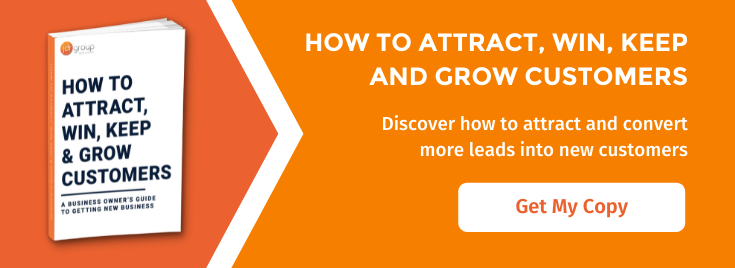Things NOT To Include In A Mobile App Landing Page

When marketing a new mobile app for your business, it is helpful to set up a dedicated landing page to drive traffic. This will increase your number of clicks and maximise the chance of the app being downloaded in greater numbers by your target market. Of course, simply setting up a landing page does not guarantee traffic, nor –crucially – does it guarantee conversions when visitors arrive. For a marketing campaign to be effective, your landing pages have to be geared up for the highest possible conversion rate.
So what should, and should not be included on a mobile app landing page?
How Does A Landing Page Differ From Any Other Web Page?
Let’s start with definitions. A landing page is a web page that is designed to convert visitors into leads by prompting a specific action. For some landing pages this may involve prospects submitting their email address in exchange for free incentive content (such as an e-book). A landing page may also be set up to encourage direct purchase of a product or service. As a mobile app landing page, your page will probably fall into the latter category. You want your visitors to sign up for or download your app, whether this is a free gift or a paid service.
Keep this outcome at the front of your mind when designing the landing page. Every element must contribute to the end goal of prompting your visitor to download your app. It is also the case that distracting or irrelevant elements should be excluded from the page, as this could reduce your chance of a conversion. Therefore, while creating a landing page for a mobile app, there are some commonly used elements which should be avoided, in order to secure the best conversion rate.
How A Landing Page Works
To start, you first must have a value proposition. For our case, it is the mobile app itself. Use your content and visuals to describe the value your app offers your prospects. What problems does it solve? How does it save time and money? The content should capture the interest of your ideal clients by appealing to their buyer persona and stage in the sales journey.
Some visitors will be closer to making a purchase decision than others. Cater for this by providing different levels of information on your page. For instance, if a prospect has little or no previous knowledge of your business, the offer should be informative and educate them about what your app does for their business. You may not get a sale from these visitors on the first visit, but laying the groundwork will encourage them to come back. For prospects further along the buying journey, the offer should focus more on the decision-making process and the buying criteria. These are the guys who are ready to download and it is your job to make it as quick and painless as possible for them to do so.
Once you have assembled the landing page content and you have an offer, you must provide your prospect with a means of action via a Call to Action (CTA) link. CTA links can be placed on your main website, on landing pages, in email messages and on social networks. A CTA needs to be clear, it needs to be fast and it has to work. Learn more about CTAs with this great article - Four Tips for Developing Effective Call to Action Buttons.
So to summarise the positive features of a landing page…
- Concise and compelling written content.
- An engaging headline.
- A spacious, uncluttered web page layout. Use bold and contrasting colours but make sure the key information is well presented and easy to read.
- Web-optimised images.
- A web form to capture at least an email address, and possibly other relevant details (e.g. name, the name of the company, phone number etc.)
- A download button taking the prospect to the app (and payment integration if applicable).
What To Exclude
What about the negative features alluded to in the article title? Based on this product, the following particulars should not be featured on a landing page due to their negative impact on conversions:
Avoid Including Too Many Outbound Links On Your Landing Page
Links can be helpful when they are relevant, carefully selected and clearly positioned on the landing page. Otherwise they simply divert traffic away from the prime purpose of the landing page. Including too many links may dilute your ask and confuse your prospects. This includes links to other pages on your own website and any other product or service you offer. Keep your landing page nice and simple.
Avoid Including Too Much Details On The Landing Page
Keep your content concise and focused. Only write about your app – not generally about your company. And don’t use seven words when you can use three. You can provide more detail about your business and services on other pages. For the landing page, keep everything tightly focused on your value proposition.
Avoid Using Lengthy Videos
Video content works really well on landing pages, but be careful of the length. As much as a video might help convey what your offer is all about, many prospects won’t have the time or patience for a long video. Keep it to less than a minute in length and be sure to leap straight into the action. Also, make sure the video is optimised to run on all types of device – don’t assume that everyone will have an ultra-fast internet connection. Optimise your video for visitors using an ancient smart phone while on a train and you won’t go far wrong!
Avoid Cumbersome Page Navigation
Always keep your focus on the prize. Many businesses brand their landing pages to look like other pages on their site, including full page header and navigation. The reason for this is to enable visitors to explore more of what you provide. For other pages this makes perfect sense. However, for a landing page this is the very opposite of what you want. The main objective of a landing page is to prompt a specific action, not for the visitor to wander off onto other parts of your website. Do not distract them by giving them somewhere else to go. If you want to include some navigation, restrict it to a couple of small links at the bottom of the page. No top level navigation is necessary.
Avoid Lengthy Forms
People hate spending time filling out web forms. Only ask for the information you strictly need, and provide a clear justification for requesting it. For a mobile app page you’ll need the prospect’s name, email address (for the download link and your marketing programme) and business name. It is good practice to include a CAPTCHA field to cut back on spam. However, if you do this, make sure your CATCHA is triple field tested for functionality and is really straightforward to use. Nothing deters a lead more than a CAPTCHA challenge that refuses to work, especially one that resets the form each time. #FAIL.
Working With A Marketing Agency
Landing pages play a critical role in any marketing strategy. Every product and type of business is different. If you are promoting a mobile app you will require a different approach to other services. A sound marketing strategy starts with an understanding of your customers and what they really need. This is why it is helpful to work with a marketing agency. We can help you set up convincing landing pages and a promotional strategy that draws in visitors. This is the key to getting a steady flow of new business and a good return on investment from your marketing spend.


